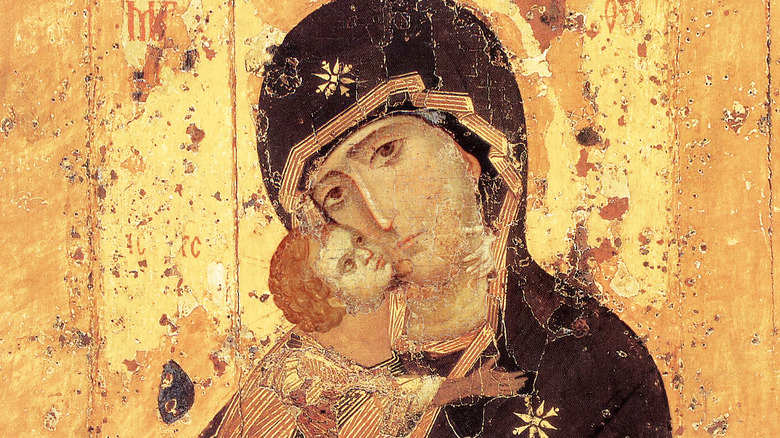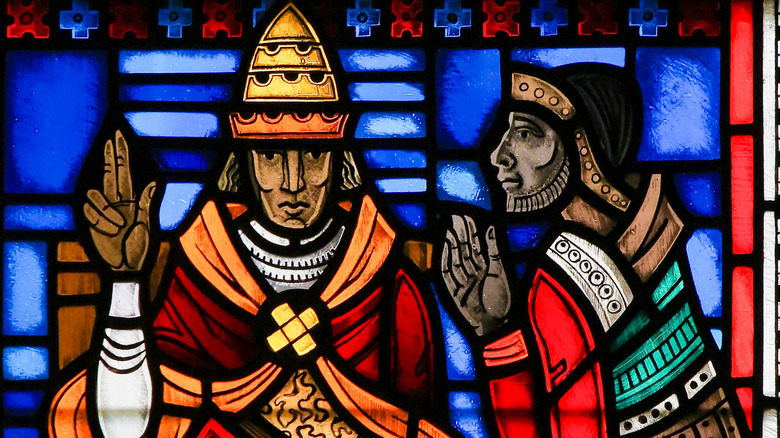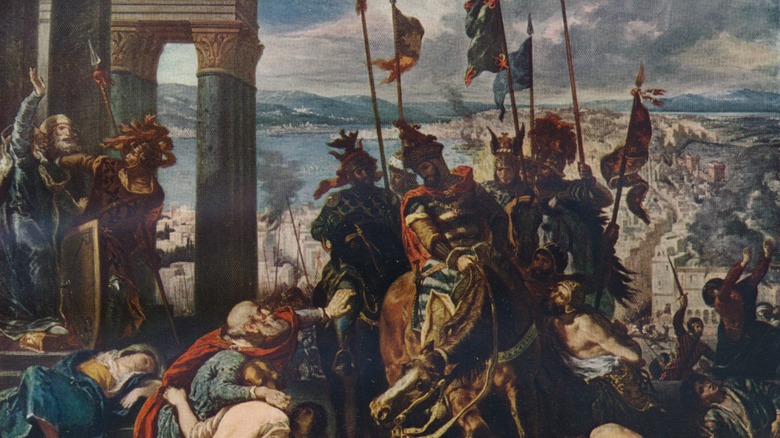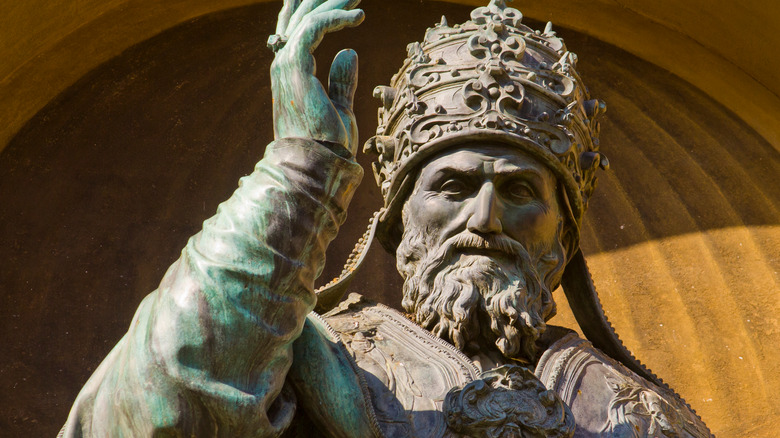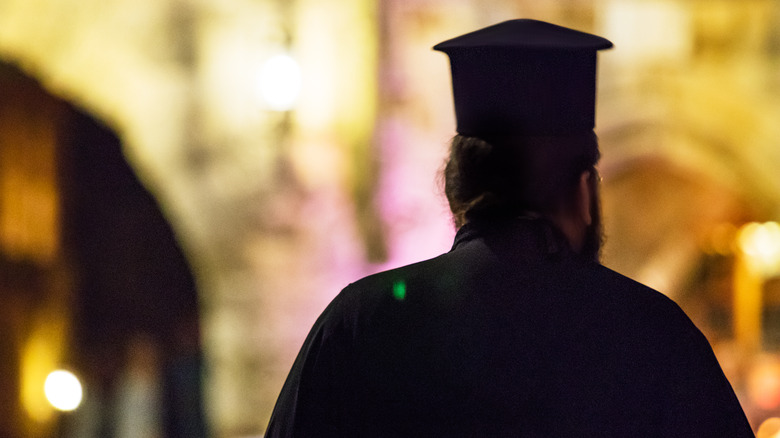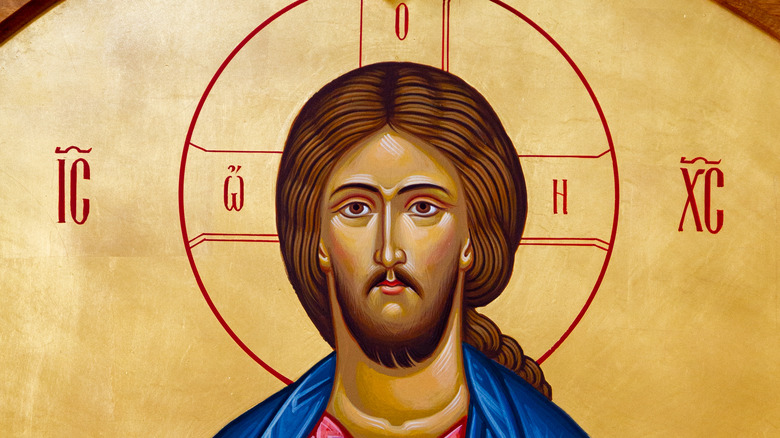The Untold Truth Of The Eastern Orthodox Church
In the West, a lot of people think of Christianity as bifurcated: Are you Catholic, or Protestant? We think of the Reformation being the moment the Christian Church divided, but in fact, various factions of Christians have been going their separate ways almost from the get-go. Often left out of the conversation entirely — and unfairly — is the Eastern Orthodox Church, which represents 215 million Christians worldwide and as many as 5.6 million in the United States. They are the second-largest unified Christian body after the Catholic Church. Yet this massive body of Christian believers — in the minds of a lot of Americans at least — often goes completely ignored.
Who is the Eastern Orthodox Church? Where did they come from? And will they share their baklava with you (probably, if you're not a jerk about it)? Let's take a look at the history and practice of one of the world's oldest and largest traditions of the Christian faith.
The split happened over three words
It's a bit of an oversimplification to say that there used to be one undivided global body of Christians, but for a few hundred years, that was pretty close to the truth. After Jesus' death, Christianity spread quickly to the edges of the Roman empire and beyond. At this time, all the major dioceses and parishes were more-or-less in full communion with each other, with occasional councils of bishops resolving theological and practical disputes. Some cracks began to show in the early A.D. 400s when the Oriental Orthodox Church (concentrated mainly in Africa) and the Church of the East (mainly in the Middle East and East Asia) broke away (via the World Council of Churches). But they were relatively small bodies compared to the big church primarily located in the Roman Empire.
Unfortunately, it turned out the Roman Empire itself was doing most of the heavy lifting in keeping that particular group together. So when the Roman Empire fell in the late 400s (leaving behind the eastern Byzantine Empire, which would survive another thousand years), the two parts of the Church began to drift apart. When the Bishop of Rome (i.e., the Pope) began to claim primacy over the Church, the Eastern Churches said, "Nah, we're good." Eventually, the Western Church did something the Eastern Church just couldn't get behind: They added three words to the Nicene Creed, resulting in the two churches mutually excommunicating each other and splitting for good (via Britannica). More or less.
Then the Western Church decided to make everything worse
The three words, in case you're wondering, were "and the Son." There's a line in the Nicene Creed (historically the most important creed in all of Christianity) about how the Holy Spirit "proceeds from the Father." So when the Western Church unilaterally added "and the Son" to the end of it — without consulting anyone in the East — Easterners had a big problem with (via Britannica).
Anyway, despite the A.D. 1054 excommunications, it wasn't quite clear that the churches were separate now. The Western Pope and the Eastern patriarchs occasionally still cooperated, specifically during the Crusades. The Crusades are a whole other can of worms that we're not looking to get into now, but it is true that the Muslim Empire was threatening the Byzantine Empire with conquest, and it is true that the Byzantine emperor reached out to the Pope to help restrain it. From there, though, things sort of went from bad to worse.
The problem was that the fall of Rome had left the West penniless, so the cost of raising an army almost always had to be offset with looting and pillaging. And while that worked okay for the first few Crusades, by the Fourth Crusade, the army didn't even have enough cash to get themselves to the Middle East. Ultimately, their solution was to loot and pillage Constantinople — the capital of the Byzantine Empire, via Britannica. It ... wasn't great. And it put a pretty big exclamation point on the East-West Schism.
They're 13 days behind most of us
Okay, so they're not Catholic, and they're not Protestant. So what's different? Well, a lot, but for starters, they're almost two weeks behind the rest of the world. To understand why, we'll have to have a conversation about calendars for a second. This all goes back to the B.C. era when Julius Caesar helped create a calendar that's fairly similar to the one we use today. There was one problem with it, though: it had too many leap years. This was a problem so subtle that nobody even noticed it for a millennium and a half, but slowly the calendar was getting behind the actual position of the Earth. In 1582, Pope Gregory XIII said, "Hey, let's fix things," and took out every 20th leap year, while leaving in every 80th leap year — it's complicated, sorry! He then told everyone to jump forward eleven days to catch up to where they should be (via Time and Date).
As you'd expect, the Catholic countries followed Gregory's lead on this pretty quickly, while the Protestant countries resisted it for a while before giving in. The Orthodox countries, on the other hand, still haven't really fully taken the plunge. Some Orthodox churches — all but the churches of Jerusalem, Russia, Serbia, and Mt. Athos — use the "new calendar" for most of the year. However, they switch back to the old calendar for Easter to make sure all Orthodox Christians are doing Easter at the same time (via BBC). Again, it's ... complicated.
Priests can be married. Sometimes.
In the Catholic Church, "priest" means "celibate." You want to be ordained? Better say goodbye to marriage, sex, and having children. It wasn't always that way, though; heck, St. Peter, whom Catholics regard as the first Pope, was famously married. It wasn't until the Second Lateran Council of A.D. 1123 that celibacy was mandated for priests — and even afterwards, there have been exceptions (Anglican converts, "Eastern" Catholics — it's complicated, you get it). In the East, on the other hand, the switch to celibate clergy was never made, and as many as 91% of American Greek Orthodox clergy are married, according to The Washington Post.
Now, to be clear, saying priests can be married isn't quite the same thing as saying priests can marry. They can't. If you want to be a married Eastern Orthodox priest, you have to get married and then receive holy orders. If you're already a priest and want to get married, you have to step down and renounce your ordination. The same goes if you get divorced. And if you get widowed? You either stay single, or you're out of the priesthood.
Oh, and only celibate priests can become bishops — that was apparently a whole thing that started in the fifth century over concern that bishops were getting a little too good at using their office to amass generational wealth.
They're not Protestant, but they're definitely not Catholic
The Orthodox faith is so poorly understood in the West that, until at least the late 1970s, certain branches of the U.S. military labeled Orthodox chaplains and servicemen as "Protestant" for administrative purposes, per The Washington Post. However, while Protestants generally regard themselves as having left the Catholic Church in order to correct its excesses or errors, Orthodox Christians see their church as the true church founded by Jesus — and regard the Catholic Church as having left them (via the Orthodox Church in America).
While Orthodox Christians think of their church as the true church, the Orthodox Church lacks the centralized hierarchy of Roman Catholicism. It's organized into a handful of "autocephalus" (self-governing) churches that are defined roughly by geographic or political region: Constantinople, Alexandria, Antioch, Jerusalem, Russia, Serbia, Bulgaria, Romania, Georgia, Cyprus, Greece, Albania, Poland, Czechoslovakia, America, and the Ukraine. There are also quite a few autonomous churches in places like Finland, Australia, and Japan.
In recent years, the Orthodox and Catholic churches have made moves toward getting back together. In 1965, for instance, the two churches officially lifted the mutual excommunication of 1054 (via National Geographic). But for anything to really move beyond that, one or both of the two churches would have to drastically shift their theology on things like the authority of the Pope, the existence of purgatory, and the use of statues in worship. It took nearly 1,000 years to lift the excommunication, though, so it might take another 1,000 years to make any more progress in that direction.
